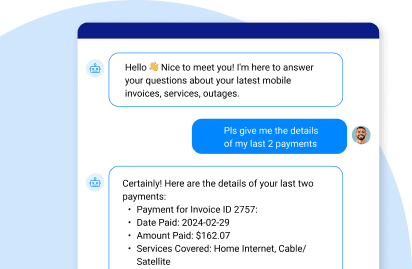An AI database schema generator is a tool using AI to automate the creation and management of database schemas. Schema-aware LLMs respond more accurately.
What is an AI database schema generator?
An AI database schema generator is a tool that leverages artificial intelligence to define the structure, organization, and relationships of data within a database – and provide a framework for how that data is stored and managed. A database schema includes things like:
| Element | Definition | Further explanation |
| Tables | The main collections of related data, each represented by a table | Tables consist of rows (records) and columns (fields). |
| Columns | The attributes or properties of the data stored in the tables | Each column has a specific data type, such as integer, string, or date. |
| Keys | Unique identifiers for records in a table | There are primary keys (unique for each record in a table) and foreign keys (which reference primary keys in other tables to establish relationships). |
| Indexes | Structures that improve the speed of data retrieval on a table | Index types include primary, unique, non-unique, composite, and full text. |
| Constraints | Data columns rules that ensure data integrity and consistency | These include primary key, foreign key, unique, and check constraints. |
| Relationships |
The connections between tables, typically defined by foreign keys |
Relationships can be one-to-one, one-to-many, or many-to-many. |
| Views |
Tables consist of rows (records) and columns (fields). |
Views present data from multiple tables as a single table. |
Use an AI database schema generator to ensure that your data is stored quickly and efficiently and can be retrieved and manipulated as easily as possible.
Where LLMs and AI database schema generators meet
To improve the quality of your organization’s LLM responses, start by working with an AI database schema generator to automate the creation and management of database schemas. Then, enrich your LLM with relevant datasets on a particular subject using generative AI frameworks like Retrieval-Augmented Generation (RAG).
With RAG, an engineering company might augment its LLM with its manuals and specifications, while a retail company might enrich the model with its product literature and/or a particular customer’s details.
Another example is a RAG chatbot capable of answering questions in a more reliable and personalized way.
RAG is generally used for unstructured data stored in vector databases, but LLMs often need access to structured data too – and for that, they need to be able to generate SQL statements. That’s where LLMs and AI database schema generators meet.
Get the exclusive Bloor Research “RAGs to Riches” report to learn more.
LLMs rely on schemas to access structured data
For your LLM to be able to generate SQL, it must be made aware of the structured database schema it needs to access – or the names of the database tables and columns you’d like to query – as well as any relevant metadata. This additional information will provide context
When your LLM generates SQL from natural language, it can be confounded by fragmented data from multiple sources. Say your company has 6 different sources for customer data and 9 different sources for product data. If you ask your LLM to show you the “top product sales by customer”, how do you know which sources it will use for customer and product?
Companies have spent a lot of time and money building data lakes and data warehouses tasked with resolving this issue by using survivorship rules to rate which data sources are the most trustworthy, and to produce golden records of key master datasets free of duplicates and inconsistencies.
LLMs generating SQL must also be made aware of all corporate resources – in addition to all database schemas – and use the most appropriate sources of data to respond to user queries.
Going beyond database schema awareness with RAG
The ability of LLMs to generate SQL if rife with opportunity. Today, LLMs can be infused with enterprise data using the right RAG tools. This capability significantly improves the relevance of AI-generated responses in the context of chatbot customer service agents and employee experience applications.
However, giving your LLM access to your private company data, and using it to generate the SQL statements it needs to do that, involves risks as well as opportunities. As discussed, your LLMs needs to be made aware of your database schema information, the efficiency, accuracy, and performance of the queries that they generate, and the many security risks that need to be considered.
Discover K2view AI Data Fusion, the suite of RAG tools
that includes an AI database schema generator.













